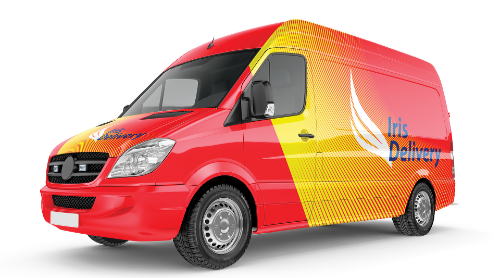7 Main Installation Factors When Working With Automotive Vinyl
 When you think about wrapping a vehicle, a lot of things come to mind. The design, the color, and finish choices, as well as the installation, are a few of the obvious things, but achieving an efficient wrap installation begins when you choose which auto vinyl to purchase. Let’s explore & discuss the 7 main factors you should consider for your next auto wrap.
When you think about wrapping a vehicle, a lot of things come to mind. The design, the color, and finish choices, as well as the installation, are a few of the obvious things, but achieving an efficient wrap installation begins when you choose which auto vinyl to purchase. Let’s explore & discuss the 7 main factors you should consider for your next auto wrap.MATERIAL
The variety of vehicular vinyl wrap is diverse and the quality of vinyl can vary from manufacturer to manufacturer. This is why it’s important to put time and energy into researching which wrapping vinyl is best for your needs. For a general place to start your research, we recommend checking out the Avery Dennison MPI 1105EZRS series. This is a great all-around automotive vinyl that will likely meet most application needs and it comes in a wide variety of styles and colors.
CREATING TEMPLATES
The best way to create & visualize the design for the vehicle is to create templates from the vehicle that you are going to be wrapping. The first step is to take straight-on photos of the vehicle from the front, side, and back. Using the actual vehicle to create templates allows you to layout the design so that the transitions between panels are simplified and don’t cause difficulties during the installation process. Creating templates by using the vehicle also allows customers to see what the design will look like on their vehicle, which will allow for any last-minute changes or to make sure the design meets expectations prior to automotive wrap installation.
 PRODUCTION
PRODUCTIONThe reason we had to spend time researching the right automotive vinyl is because, during the production phase, we are going to want to make sure we use the correct printing profile for that specific vinyl & printer. Wide-format printers are unlike traditional home or office printers. They have special settings, based on the type of material that is being used and the quality of print that needs to be achieved. Due to these specific needs, you will want to make sure the printer you are using and the automotive vinyl you have selected both are compatible with this. We recommend using quality printing equipment from Roland DGA or Epson. Again, when it comes to automotive vinyl the Avery Dennison MPI 1105EZRS will be a great place to start, as it is a popular product that interfaces well with most wide-format printers.
PREPARATION
This is the most time-consuming step, but that’s because this is arguably one of the most important steps, outside of actually installing the automotive wrap. Care must be taken to ensure all surfaces are clean so that the vinyl doesn’t fail after installation. A special solution should be used to remove all wax, dirt, dust, and debris. This will ensure that the vinyl will have the best contact with the automotive surface and allow for a quality finish that will last as long as possible.
INSTALLATION LOCATION/FACILITY
It would be a shame to go through everything you have so far only to choose a poor installation spot. Environmental forces play a real factor in how well the automotive wrap adheres to the vehicle. In addition to wanting to eliminate wind & dust, too cold or too hot of an environment will not allow the wrap to adhere to the vehicle, although vinyl technology has come a long way and brands like Avery Dennison have created vinyl more suited for these situations. So, for outdoor settings, you’d want to factor in the temperature and what the vinyl needs. The truth is, the best spot to install an automotive wrap is in a clean, indoor location where the temperature can be controlled. This will eliminate a majority of factors and allow you to have control over the outcome of your automotive wrap.
 INSTALLATION
INSTALLATIONYou’re ready to install! It goes without saying, but you’ve put a lot of time and effort in getting to this point, so let’s finish strong. Hopefully, you’ve selected a vinyl material that will make this process easier, not harder. Sticking with the Avery Dennison, MPI 1105EZRS baseline, their vinyl allows an installer to set, lift up, and re-set the vinyl material. This aids with complex curves and corners, like you’d find on hoods and bumpers. This material can also be heated to return it to its original “memory”, which helps with stretching and preventing a blown-out look. There are other types of automotive vinyl out there that have “technology” advancements over their competition. We strongly recommend many of these features, as it makes the installation process easier.
POST INSTALLATION
Before you are ready to hop in your vehicle and cruise, there are a few more things to discuss. You should run along any rounded edges with a heat gun. The recommended temperature will be based on what type of vinyl you used, but this is done to remove any stretches or stress at these areas, which will stop the wrap from pulling away. If these are left, the automotive vinyl could try to return to its “normal” shape, which would allow openings for water and other contaminants to ruin your automotive wrap.


